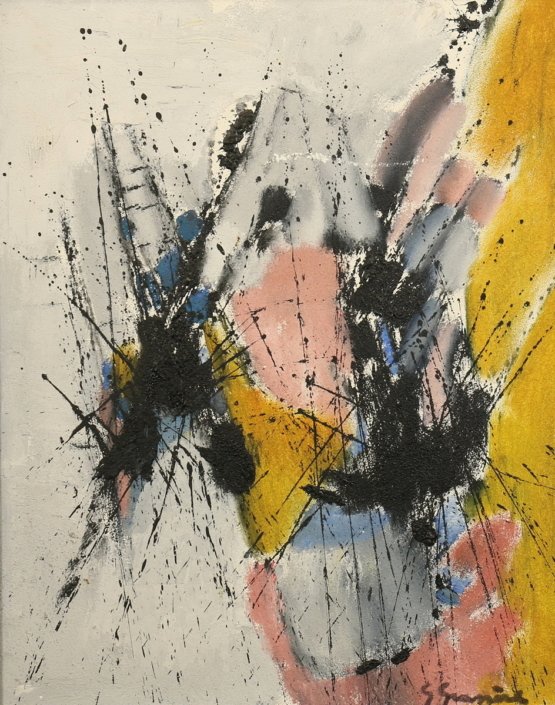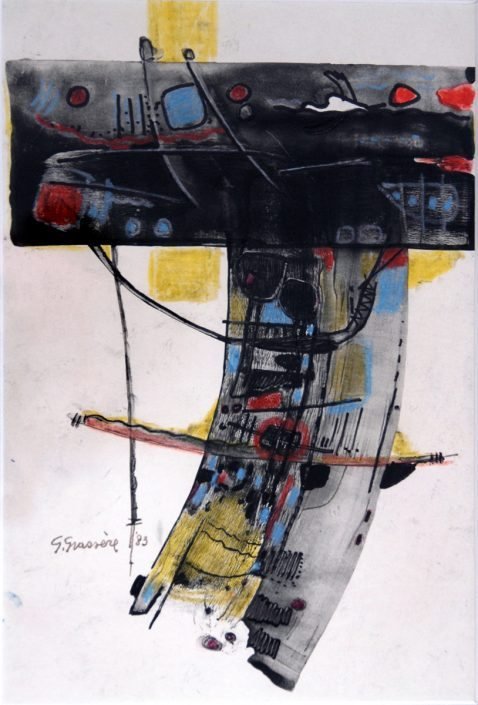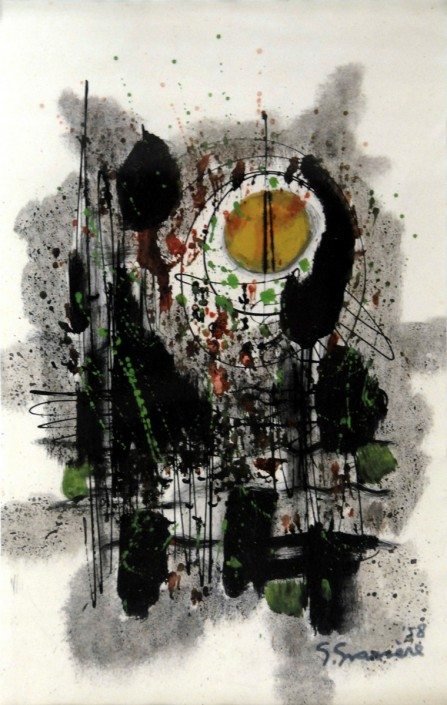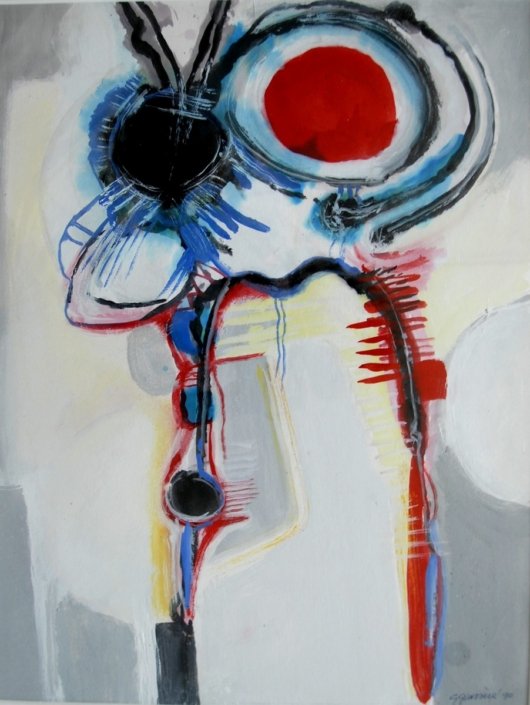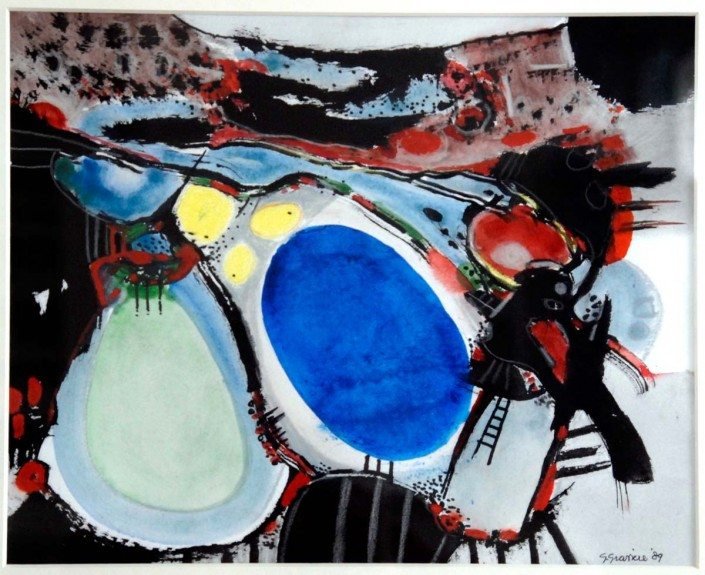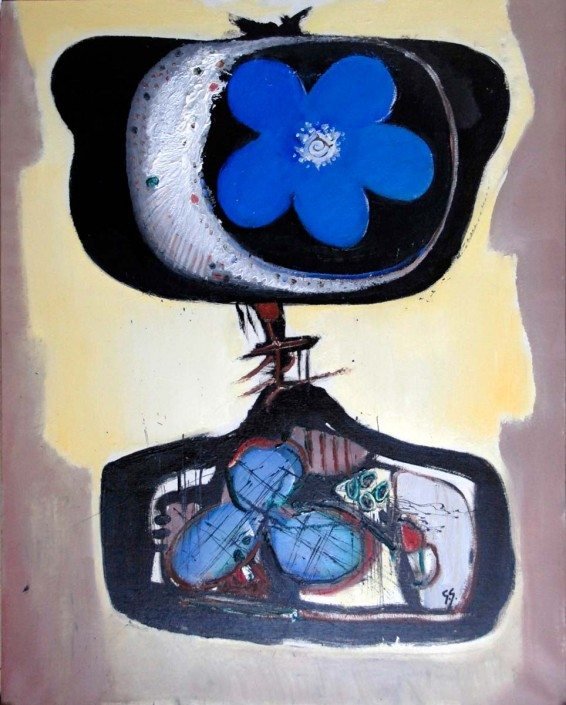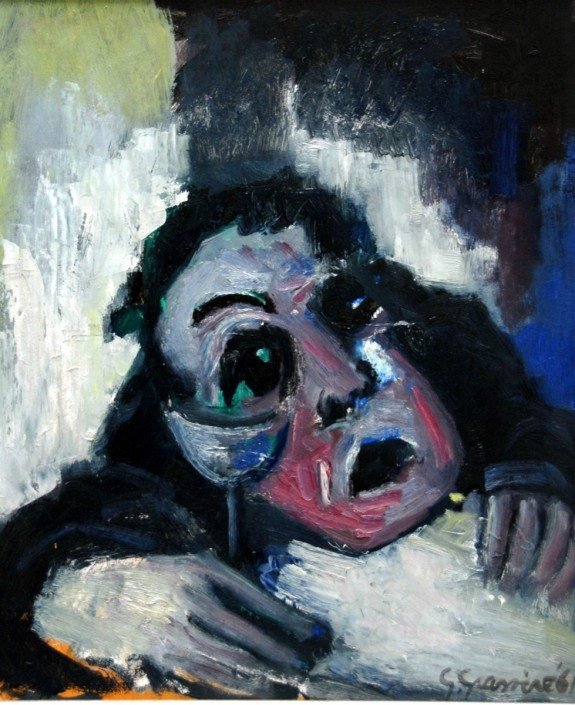Gérard Joseph Grassère (Heerlen 1915 – Den Bosch 1993)
Gérard Joseph Grassère was een Nederlands kunstschilder. Hij voltooide zijn artistieke opleiding aan de Academie voor Schone Kunsten in Antwerpen. Later studeerde hij nog een tijd in Parijs. Eén van zijn belangrijkste leermeesters aan de academie in Antwerpen was Isidore Opsomer. Grassère had talrijke tentoonstellingen in binnen- en buitenland, kreeg veel bewonderaars en wist zijn studenten en cursisten enthousiast te maken voor de schilderkunst. Grassère schildert aanvankelijk landschappen en personen in een expressionistische stijl, enigszins verwant met het werk van de Vlaamse schilder Constant Permeke. Grassère’s werk heeft door de jaren heen dicht bij de stijl van de Cobra gestaan, maar zijn vormgeving en zijn kleurgebruik hielden echter zijn eigen herkenbaarheid en zijn persoonlijke stijl. In de Eindhovense tijd ontstond ook zijn Mechanische Periode, die zich nog zou voortzetten toen hij in de jaren vijftig in Utrecht ging wonen. Grassère werd toen gefascineerd door de machines die in fabriekshallen een eigen, geheimzinnig leven schenen te bezitten. In de jaren vijftig komt Grassère in aanraking met de schilder Otto van Rees, en wordt bevriend met hem. In die tijd hield Grassère zich ook bezig met de oprichting van de groep ‘De Progressieven’, als een soort verzet tegen de gezapigheid van het Utrechtse kunstklimaat. Gérard Grassère bleef een bevlogen schilder tot aan het einde van zijn vruchtbare leven. Exposities onder andere in Nederland, België, Frankrijk, Duitsland, Noorwegen, Zweden, Nederlandse Antillen en Zuid Afrika. Werk van hem bevindt zich o.a. in het Centraal Museum te Utrecht en het Museum of Modern Art te New York.
Gérard Joseph Grassère was a Dutch painter. He completed his artistic education at the Academy of Fine Arts in Antwerp. He later studied in Paris for a while. One of his most important teachers at the academy in Antwerp was Isidore Opsomer. Grassère had numerous exhibitions at home and abroad, gained many admirers and managed to make his students and trainees enthusiastic about painting. Grassère initially painted landscapes and people in an expressionist style, somewhat related to the work of the Flemish painter Constant Permeke. Over the years, Grassère’s work has been close to the style of the Cobra, but his design and use of colour have retained their own recognisability and personal style. During his time in Eindhoven, his Mechanical Period also emerged, which would continue when he moved to Utrecht in the 1950s. Grassère was then fascinated by the machines that seemed to have a mysterious life of their own in factory halls. In the 1950s, Grassère came into contact with the painter Otto van Rees and became friends with him. At that time Grassère was also involved in the foundation of the group ‘De Progressieven’, as a kind of resistance against the indolence of the Utrecht art climate. Gérard Grassère remained an inspired painter until the end of his fruitful life. Exhibitions in the Netherlands, Belgium, France, Germany, Norway, Sweden, the Netherlands Antilles and South Africa. His work can be found in the Centraal Museum in Utrecht and the Museum of Modern Art in New York.


